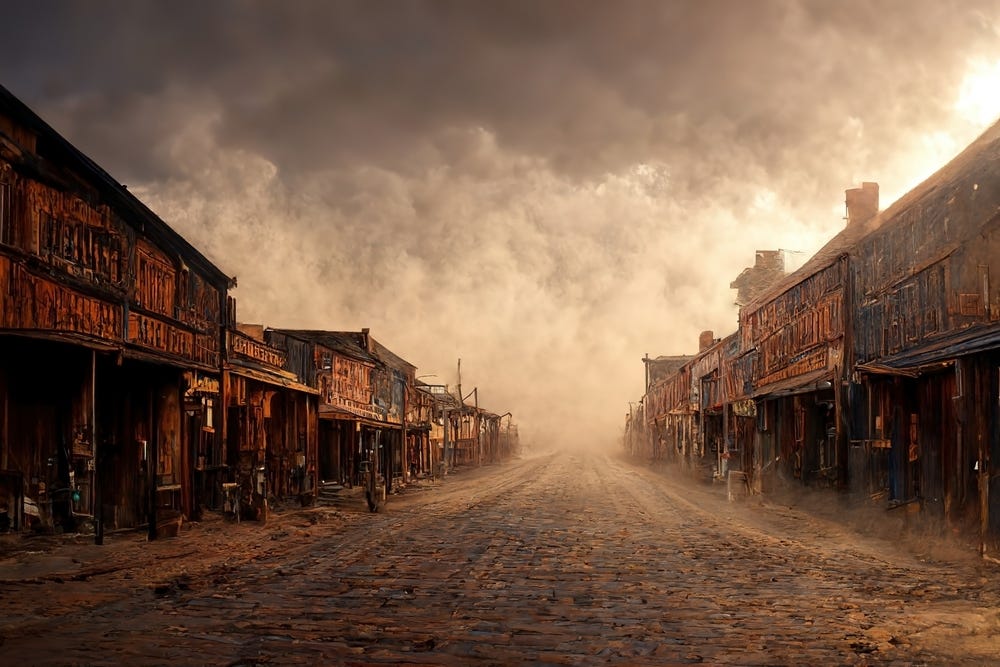New Zealand is the canary in the coal mine for the world. The country’s gas production is past peak; the proposed solution of shipping expensive LNG to the island nation will not solve the problem. The country is de-industrializing and rationing electricity in a desperate attempt to lower energy costs.
The knock on effects will initially have local impacts but as this accelerates the national economy, already in the midst of a two year recession, will be hammered. Ultimately the country will experience a deflationary death spiral, and collapse.
Here is snapshot of what the beginning of the end looks like:
Fears mill closures could create ‘ghost towns’ in New Zealand
Amid the cheerful chatter of children playing at Raetihi’s community-based Nancy Winter Early Childhood Centre, there is a palpable tension in the air, with worry etched on the faces of the parents and carers.
Manager Brenda Burnard said the tight-knit community was reeling from the shock of losing its largest employer.
“It really does feel like a car crash happening in slow motion,” she said.
Many of the childcare centre’s families were being forced to move away to find jobs or were being split up, with one parent having to live elsewhere to work.
“We’re going to be the ones to pick up pieces and that’s sad. I’m not crying about it this week. I just feel sad now, it’s been done to us and it needn’t have happened,” Burnard said.
Her husband lost his job at the mill, along with the partners of four of her staff members.
“Our region is losing skilled workers, our enrolments will drop — at the end of the day that’s viability and sustainability for our centre,” she said.
Burnard said it was hard to get the rest of New Zealand — and the Government — to fully appreciate their situation.
“The No 1 thing that people from around the country don’t understand is it’s not 230 workers and it’s not even the flow-on effects from those workers — the impact would be less if we were based near a city and we could travel to work to another major employer,” she said.
Many residents fear Raetihi will turn into a ghost town as the ripple effect from the mill closure creeps into households.
The true impact is hard to quantify because several businesses connected to the mill are also losing workers or laying them off. RNZ understands a local logging truck company has had to let dozens of drivers go, and Napier Port and KiwiRail are also planning job cuts.
In Raetihi, Darren Dempsey has owned his bus company for 35 years, providing daily transport for mill workers during that time.
“We’ve lost probably a third of our business, we’ve had to lay off two staff and will have to sell some vehicles to recoup some of our costs,” he said.
“It’s not easy and in the long term we don’t know how it’s going to go really, it’s still early on.”
The town has had an increase in houses going on the market as workers leave for Australia or other regions, and Dempsey believed many more people would be forced to move, hurting local businesses even more.
“There’s been a huge flow-on effect already and I’d say it’s going to get worse before it gets better,” he said.
Down the road, Raetihi’s Coach Cafe and Takeaways, too, is taking a hit. Owner Angie Robson told RNZ it was down about $800 a day compared with a year ago, as people tightened their belts or moved away.
“I’ve laid off my husband of all people, but it meant I could keep my part-time staff, so he’s gone back to his old job,” she said.
“It could get worse, but we’re in for the long haul, hopefully.” Source
The World is Staring into the Abyss
World crude oil extraction reached an all-time high of 84.6 million barrels per day in late 2018, and production hasn’t been able to regain that level since then. Source






Cruising for disaster: High costs have cruise liners bypassing New Zealand
Close to 10,000 New Zealand jobs were supported by cruise tourism, providing $425 million dollars in wages.
Cruise Lines International Association co-commissioned the report. Australasia managing director Joel Katz said it painted an exciting picture of the past, but the future looked more bleak.
"We're seeing a 20 percent decline in the coming season. We've seen an even larger decline in the season after that, and that translates into hundreds of millions of dollars and thousands of jobs that are potentially lost because those ships aren't able to come."
He wanted to see the report to become a regular feature.
"We know that there are challenges in the cruise market here in New Zealand, and I think it's important that we're able to quantify the opportunity and the costs of not getting the settings right."
It was a record cruise season last year, with more than 1000 ship visits and 1.5 million passenger visit days.
New Zealand Cruise Association chief executive Jacqui Lloyd said cruise liners were telling her Aotearoa was now the most expensive region for them to visit, and they were looking elsewhere.
https://www.rnz.co.nz/news/business/532608/cruising-for-disaster-high-costs-have-cruise-liners-bypassing-new-zealand
NZ Post deliveries could be cut to twice a week
https://www.odt.co.nz/news/national/nz-post-deliveries-could-be-cut-twice-week
Another canary in the coal mine... more rationing of energy....